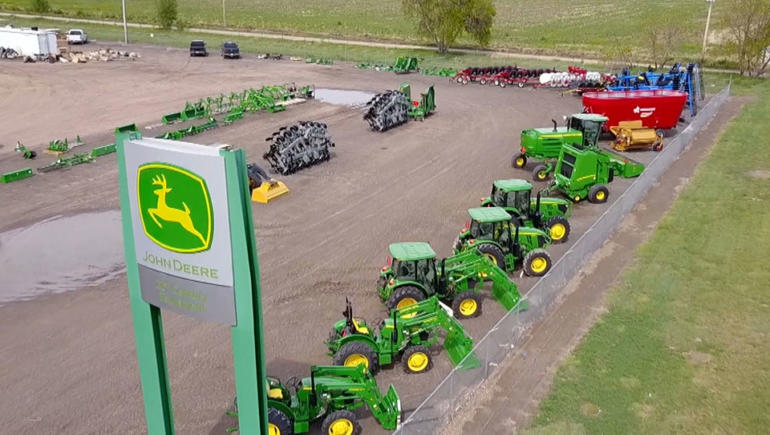U.S.-China trade tensions and low commodity prices are stunting growth for U.S. agriculture. Still, some equipment retailers are finding a reason to be optimistic.
CGTN’s Hendrik Sybrandy reports.
Dave Hazlett is a busy man lately. This service tech at 21st Century Equipment in Fort Morgan, Colorado has no shortage of combines and other machinery to work on.
“As the fleet gets older and older, our parts sales and our service departments get busier and busier,” said Owen Palm, 21st Century’s C.E.O. Palm runs 16 John Deere dealerships in Colorado and Nebraska. He said his customers are largely in fix-it mode these days when it comes to their farm equipment.
“It’s really been our new sales that have been impacted,” Palm added.
These are challenging times for American agriculture. Record crops have driven down commodity prices for the past five years or so, a trend reinforced with China no longer buying U.S. soybeans. Then steel and aluminum costs went up a year ago.
“That’s when President Trump announced the first round of tariffs and everything came to a screeching halt at that point,” Palm said. “Deere experienced increased costs of materials. They passed those costs on to the dealer and the dealer, of course, tried to pass those costs on to the customer.”
And many customers put new purchases on hold. According to the U.S. Commerce Department, farm equipment experienced its sharpest drop in sales in three years in the first quarter of 2019. John Deere first predicted that farm equipment sales would grow by four percent this year. It’s since downgraded that to two percent which means $464 million less in tractor and harvester purchases.
“This is a brass washer and these are nuts and bolts,” said Terry Trim, a Colorado farmer showing off her newest purchase. She had just driven 80 kilometers to buy parts for her wheat combine.
“We don’t buy new,” Trim said. “We buy used and we fix ‘em and that’s the way it is.”
She said lots of farmers, in this capital-intensive profession, do the same.
“It’s tough to make ends meet right now,” said George LaCoeur, a Louisiana farmer. “Machinery costs go up. A $750,000 cotton picker and a $500,000 combine… It’s tight. It’s tight.”
“The drop in commodity prices has put a lot of pressure on balance sheets and I think our customers are getting a lot of pressure from their lenders not to make any major capital purchases,” Palm said.
He held off on hiring for a while, but has started aggressively recruiting potential employees. He has plans to upgrade several of his stores. With lots of farmers eager to take advantage of new technology, like artificial intelligence, in their operations, he believes his industry is finally moving into a replacement cycle.
“We’re optimistic that this is going to pass and that we’re on to better days,” Palm said.
Stable prices and trade certainty equal farmers who are ready to spend. Until then, the service techs will have their hands full.
 CGTN America
CGTN America

